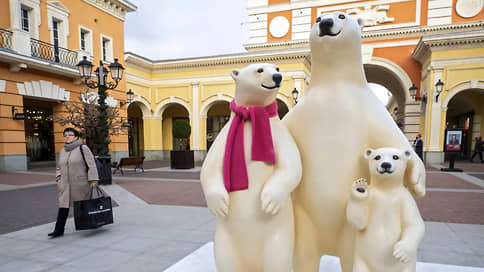How in demand is the outlet format?
[ad_1]

Village Pulkovo and Belaya Dacha in the Moscow region can be bought by the Kama Capital company from Tatarstan, writes RBC. The American investment fund Hines has been trying to sell these assets since the fall of 2023. The transaction amount for the two sites is estimated according to various sources from 12.5 to 30 billion rubles. The new owner has allegedly already prepared separate structures. This also follows from the information on the SPARK system website: the companies “Outlet Central” and “Outlet North-West” appeared there. How do outlets operate under sanctions? And why aren’t Russian brands rushing there? Aelita Kurmukova found out.
Outlets withstood both the crisis and sanctions. The share of vacant space, as Kommersant FM’s interlocutors say, is now minimal and lower than in regular shopping centers. Despite rational shopping and the growth of marketplaces, Muscovites often go to outlets with their families.
If in 2021 a buyer spent about €300, now the average check has increased by 30% in proportion to the exchange rate. The departure of European brands did not particularly affect the profitability of the business, but its structure has changed, says Dmitry Razzhevaikin, ex-director of asset management at Hines Russia, and now general director of the Axioma Club company:
“Since neither Uniqlo, nor H&M, nor the brands of the Inditex group were ever represented in the outlets, it was not noticeable that the doors were closed and there was any vacancy. Now in outlets it is minimal, these are very good assets, there are not many of them. They are still considered as promising objects for the development of their networks. We have only one premium outlet in our country with some luxury brands.
There are two trends: they are turning from luxury to premium and instead of mono-brand boutiques, multi-brand stores are opening.”
Over the course of a year and a half, the business adapted both parallel imports and logistics. And luxury, despite the sanctions, comes to Russia with the latest collections, and after sales it goes to outlets. Even if with a markup – not the usual 20% or even 30% compared to Europe, but sometimes even 50% – there are still buyers, adds Dmitry Razzhevaikin from Axioma Club:
“Whoever says that it’s easier to go to Dubai or somewhere else, you don’t fly there every day. And service for a premium luxury client is very important.
Often, some buyers, faced with the need to stand in line for an hour at boutiques in Dubai, prefer not to do this again, but to calmly go shopping in Moscow, with sellers who know them.”
There are six classic country outlets around Moscow, plus a large discount center within the city on Leninsky Prospekt. All except one work with democratic brands. But their price tag already reaches the premium level. Take Levi’s for example. In Russia, their jeans cost from $200, in America – an average of $70. But not all foreign brands remained in the outlets, says Fashion House Group Marketing Director Konstantin Anisimov:
“The brands that have left have now opened stores under different names. And with the departure of Western management, the understanding of the sales structure in outlets disappeared. While our legal successors are still only thinking about how to earn as much as possible. The shortest route is a shopping center with high traffic. But retailers sell new collections, and next to them there are remnants from previous ones – sale. Accordingly, they harm themselves and reduce the margins of the new collection.”
Outlets have historically been built far from metropolitan areas. And all because such strict requirements were once established by international brands. Such sites should not be located inside cities, so as not to interrupt sales of the main collections. But Russian brands are still reluctant to enter outlets, shares senior director of Core.XP Marina Malakhatko: “Not all Russian brands are mature enough to create such a format. There are few stores, and they may have sales inside their regular outlets.
Domestic brands that have opened several dozen stores will come there; they already have enough stock to sell their products through the outlet format. But we are not expecting international brands yet, especially in outlet format. Turkish brands that entered last year have at least two years before their first stock.”
Rates in outlets are lower than in top shopping centers, adds Malakhatko. And at the same time the conversion is higher. People who come for shopping outside the city are already in the mood to buy. And there is practically no empty traffic.
Everything is clear with us – Telegram channel “Kommersant FM”.
[ad_2]
Source link





